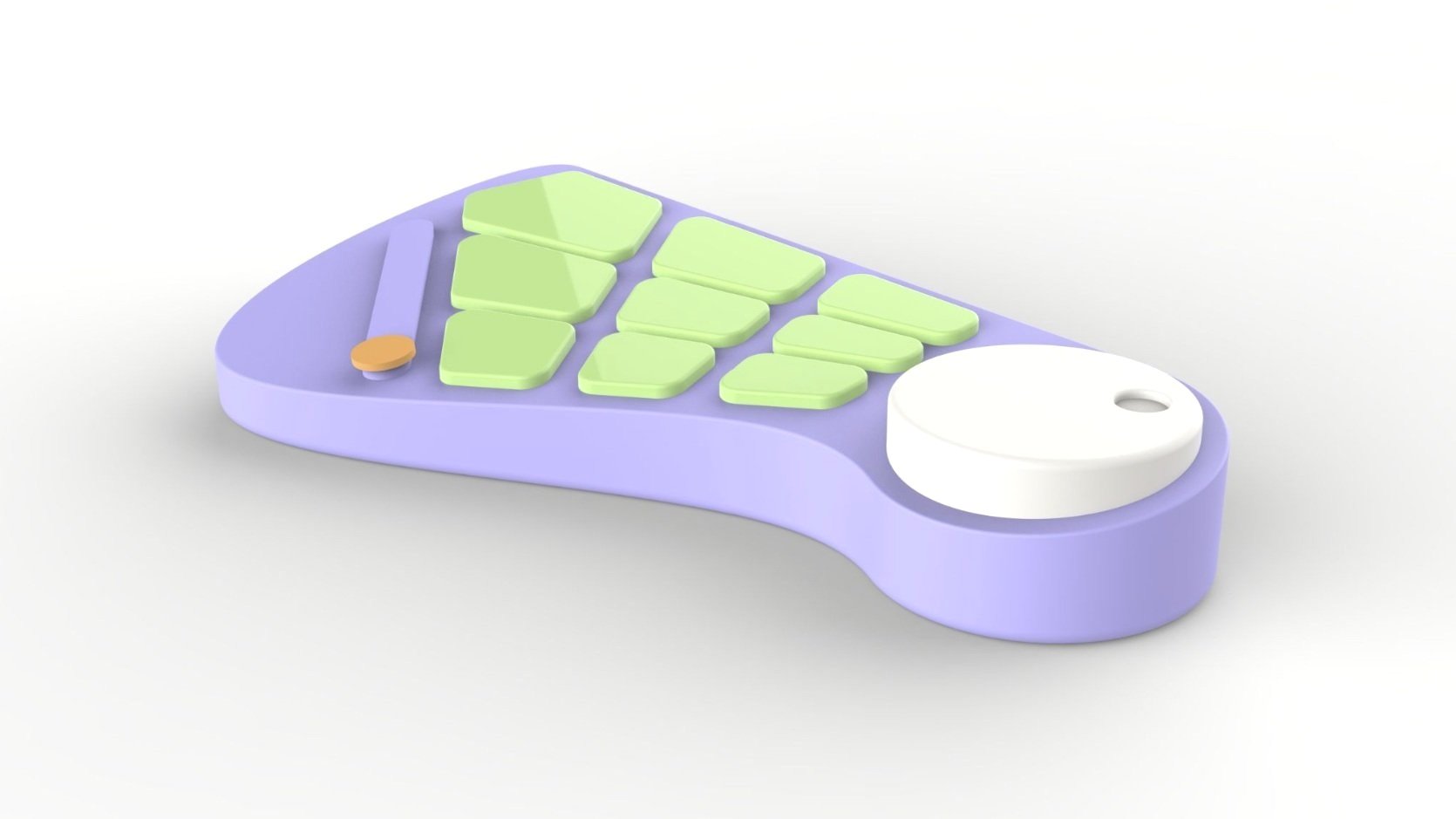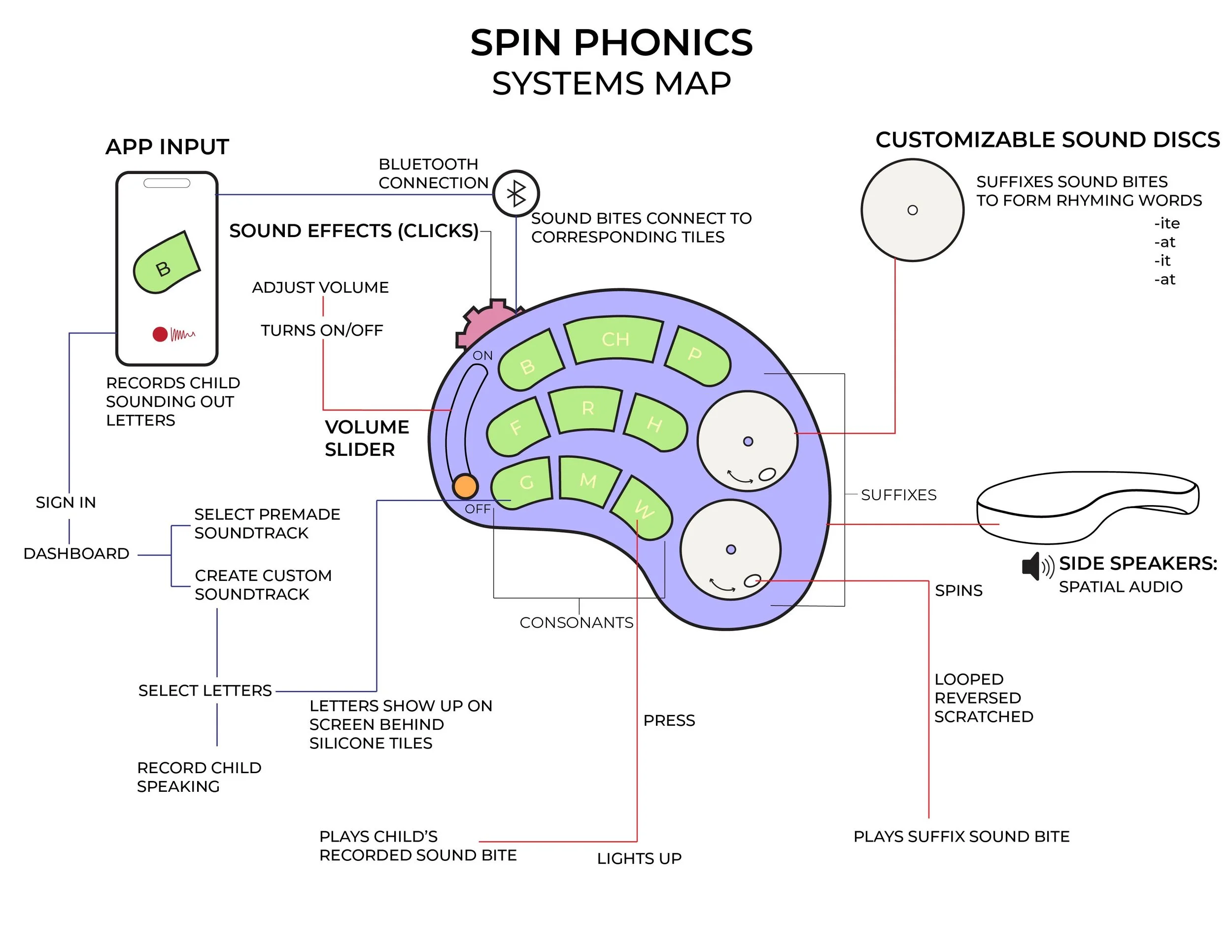
A soundboard toy for teaching reading skills.
Spin Phonics is a soundboard device for 3-5 year olds to explore letter sounds through open play and lay the foundation for future reading. Created in collaboration with Anna Yu, Jessie Duit, and Nozima Nurullaeva under mentorship of Debera Johnson.
Guiding Concepts
How can we create a learning device that utilizes open play?
How do we create a multimodal experience, considering movement, touch, sight, and sound?
How can we have the device grow with the user, from ages 3-4, to ages 4-5, and beyond?
How it Works
-
The freeform soundboard mode allows for 3-4 year olds to explore phonemes -word sounds- through open play in order to lay the foundation for future reading. Success is measured by engaged and continued play.
Play consists of pressing letter sounds and freely creating sound combinations that are not necessarily words, but could become words.
The kid gets to take the place of a DJ- mixing, scratching, smashing, and distorting sounds.
Like a bop-it or busy cube, various forms of input and direct output are used to create a fun experience. Kids and adults alike are able to build mastery and have fun with a product that grows with them.
-
The word forming mode allows for speech therapists or parents to input exercises based on the learning milestones of a 4-5 year old child. Focus is shifted from hearing sounds to now verbalizing and mimicking sounds. Success is measured by developmental progress as determined by the therapist.
In this mode, the keys and discs of the board light up, giving guided prompts, similar to a learning keyboard. For example, the “b” key will light up and wait for the user to press the key. At the same time, the “-ite” disc will light up and wait for the user to spin it.
Before moving on to the next word, the device waits for the user to say the word into the microphone. The speaker then plays this back to the user, creating a feedback loop. Through this feedback loop, the child doesn’t just hear but also mimics sound.
This recorded use also allows for ongoing speech therapist or parent supervision and assessment. Success is measured by developmental progress as determined by the speech therapist.
Interaction Mapping
-
Within our system there is the world of the parent or speech therapist and the world of the child. It was very important to us that all play would be done by the child without the use of an app.
Starting at the experience of the parent or speech therapist, there is a connected app that is used to customize the device. Both tile label and tile sound is controlled through the app. The user can choose between multiple pre-planned soundboards or customize their own. This customization allows for parents to teach in their own voice.
In Word Forming Mode, exercises are input in the app by the parent or speech therapist. The child’s use creates recordings that are saved in the app for the speech therapist or parent to assess.
-
In the experience of the child, an on/off slider turns on the soundboard. The tiles and discs have screens under silicone pads that display the labels as input from the app. Pressing the tiles or turning the discs output the sound bites from the app while also lighting up. Left-right tilt creates a panning effect to the speakers, while up-down tilt creates a pitch shift effect.
In Word Forming Mode, tiles and discs light up and wait on user input. Before moving on to the next word, the device waits for the user to say the word into the microphone. The speaker then plays this back to the user, creating a feedback loop. Through repetition, the user is able to build mastery.

Check out the accompanying app prototype
Created in Figma to bring the app to life.



